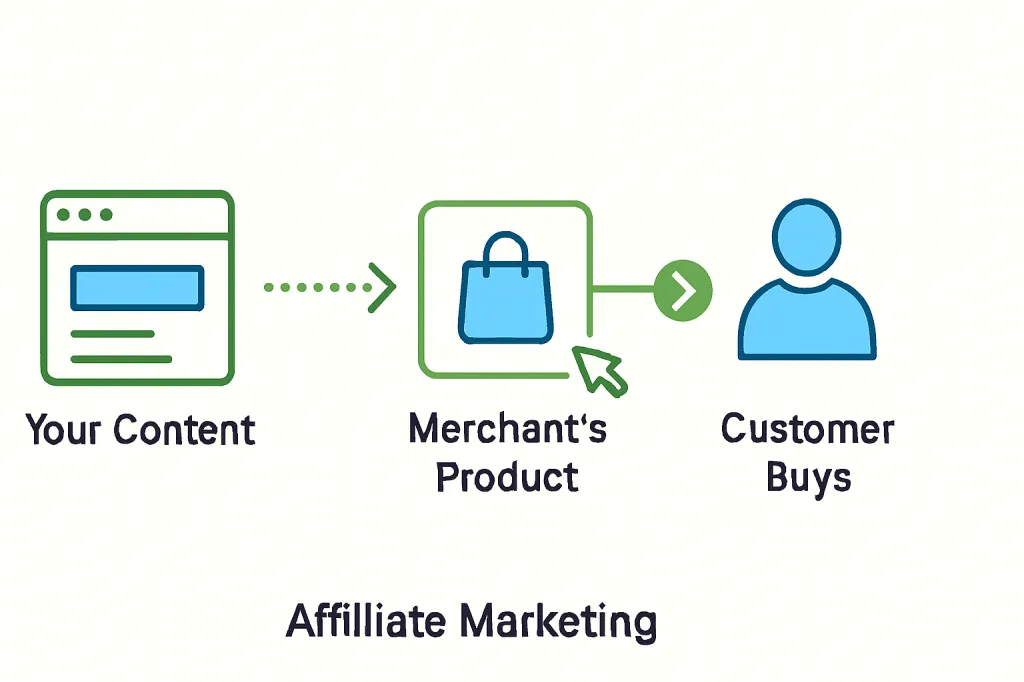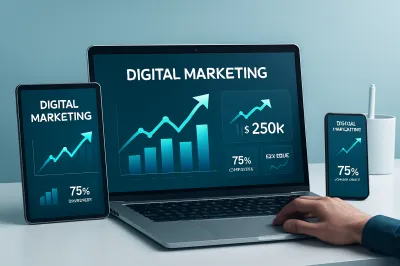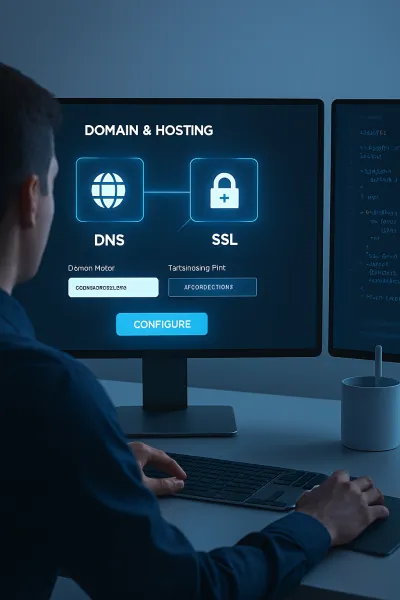If you've ever read a blog post that recommended a product and saw a special link to buy it, you've likely encountered affiliate marketing. It's one of the most popular and effective ways for content creators to monetize their platforms, turning their passion and expertise into a source of income.
But what exactly is it? In simple terms, affiliate marketing is a performance-based model where you earn a commission for promoting another company's products or services. You find a product you like, promote it to your audience, and earn a piece of the profit for each sale that you make. This guide will break down how it works, why it's a fantastic model for bloggers, and the essential steps to get started.
How Does Affiliate Marketing Work? The 4 Key Players
The process is powered by a unique tracking link given to each affiliate. When a visitor clicks your link, a small file called a cookie is stored on their browser. This cookie has a set duration (e.g., 30 days) and attributes any purchase they make within that period to you. There are four main parties involved:
- The Merchant: The company or brand that creates and sells the product (e.g., a software company, a hosting provider, an online retailer).
- The Affiliate (You): The publisher or content creator who promotes the merchant's product to their audience.
- The Customer: The end-user who clicks your affiliate link and makes a purchase.
- The Affiliate Network (Optional): A middleman platform (like Amazon Associates, ShareASale, or CJ Affiliate) that handles the tracking, reporting, and payments between the merchant and the affiliate.
Why Affiliate Marketing is a Great Model for Content Creators
- Low Startup Cost: You don't need to create, produce, or ship your own products. Your only job is to focus on marketing.
- Passive Income Potential: A single, high-quality blog post or review can continue to earn you commissions for months or even years after it's published.
- Flexibility: You can promote products from anywhere in the world, at any time. Your website works for you 24/7.
- Builds Authority and Trust: When you genuinely recommend products that solve your audience's problems, you build credibility. Your recommendations become a valuable resource for your readers.
How to Get Started in 5 Simple Steps
Step 1: Choose Your Niche
The foundation of successful affiliate marketing is trust. You can't build trust if you promote random products. Choose a niche—a specific topic area—that you are passionate and knowledgeable about. Your niche could be anything from web development and PHP programming to home gardening or travel. The more focused your niche, the easier it is to build a loyal audience.
Step 2: Build Your Platform
You need a place to share your content and affiliate links. While you can use social media, the most valuable asset you can own is your own website or blog. A website gives you complete control over your content and allows you to build a long-term asset that attracts visitors through SEO.
Step 3: Find Relevant Affiliate Programs
Once you have a niche and a platform, it's time to find products to promote. Look for companies in your niche that offer affiliate programs. For a web development site, this could include:
- Web Hosting Providers (e.g., Hostinger, Cloudways)
- WordPress Themes and Plugins
- Software as a Service (SaaS) tools
- Online Courses
Always prioritize products that you have personally used, tested, or thoroughly researched.
Step 4: Create High-Quality, Honest Content
This is the most important step. Don't just create content to spam your links. Your primary goal must be to help your audience. Create content that solves their problems, answers their questions, and provides genuine value. Common types of affiliate content include:
- In-depth product reviews
- "Best of" comparison articles
- Tutorials and "How-To" guides that use the product
Crucially, always disclose your affiliate relationship. Transparency is key to maintaining your audience's trust.
Step 5: Drive Traffic to Your Content
You've built the platform and created the content; now you need to get people to see it. Focus on long-term traffic strategies:
- SEO: Optimize your articles to rank on Google for your target keywords.
- Email List: Build an email list to communicate directly with your most loyal followers.
- Social Media: Share your content on relevant social platforms to reach a wider audience.
Conclusion
Affiliate marketing is not a get-rich-quick scheme; it's a legitimate and rewarding business model that requires dedication and a focus on providing value. By building an audience, earning their trust, and recommending products that genuinely help them, you can create a sustainable source of income from your passion. 💰





